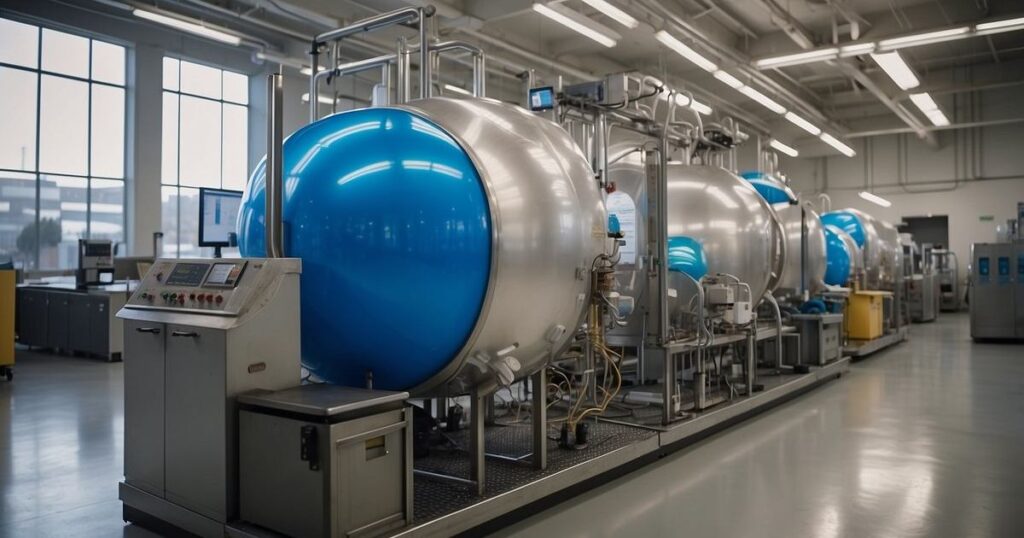Helium gas has long been a staple in various industries, but current dynamics and future projections suggest significant growth and diversification. The global helium gas market is projected to grow steadily, driven by increased demand from the electronics and semiconductor industries, reaching an estimated USD 46.8 billion by 2034. This growth trajectory underscores the crucial role of helium in both established and emerging industries, bolstered by its unique properties such as low boiling points and non-reactivity. One of the critical trends in the helium gas market is its expanding application scope. From cryogenics and leak detection to pressurising and purging in aerospace, the breadth of helium’s utility is vast. The medical field, in particular, sees robust helium demand for MRI machines and other diagnostic equipment. As technological advancements continue, the production and supply chains are expected to adapt, ensuring a steady helium flow to meet growing industrial needs.
Complementing this demand surge is the forecasted Compound Annual Growth Rate (CAGR) of around 4-6.7% from 2024 to 2030. Such figures highlight the perpetual need for helium and the promising growth opportunities within the market. By understanding these trends in the helium gas market, stakeholders can better navigate the evolving helium landscape, positioning themselves to leverage its myriad applications.
Current Market Landscape

The helium gas market is experiencing significant shifts, driven by increasing demand and evolving competition. Global supply constraints and strategic moves by key industry players underpin these dynamics.
Global Demand and Supply Dynamics
Helium’s unique properties make it indispensable for various applications, especially in the electronics and semiconductor industries, where demand is surging. Current market size projections suggest growth from $30.4 billion in 2024 to $46.8 billion by 2034, reflecting a substantial compound annual growth rate (CAGR) of 4.4%.
On the supply side, extraction and production costs have risen due to limited natural sources. Gaseous and liquid helium supplies are tight, with key extraction regions in the United States, Qatar, and Russia. Companies must navigate geopolitical tensions and production challenges to ensure a steady supply.
Key Players and Competitive Overview
Several major players dominate the helium market, including Linde plc, Air Liquide, Air Products, and Praxair. These companies engage in strategic mergers, acquisitions, and innovative product launches to strengthen market positioning and diversify their portfolios.
The competitive intensity remains high, with companies like Messer Group GmbH, Taiyo Nippon Sanso, and nexAir LLC continually adjusting their strategies. Partnerships with local and international entities play a crucial role in ensuring market reach and supply chain resilience. Emerging players are focusing on cost efficiencies and sustainable extraction technologies to carve out their market share.
Applications and End-Use Industries

Helium gas is critical in a variety of applications and end-use industries due to its unique properties, such as low density, low boiling point, and inertness. Key areas of application include healthcare, electronics, and specialised industrial uses.
Healthcare and Medical Technology
Helium plays a vital role in the healthcare sector, particularly in magnetic resonance imaging (MRI) machines. The gas is utilised in cryogenic cooling systems to maintain the ultra-low temperatures required for superconducting magnets.
Helium is also used in breathing mixtures for patients with respiratory issues and during medical procedures. Its low density makes it ideal for facilitating medical imaging and therapy applications, making it a staple in hospitals and medical research facilities.
Electronics and Semiconductor Manufacturing
In the electronics industry, helium is invaluable for its use in semiconductors and fibre optic manufacturing. The gas provides an inert atmosphere that prevents oxidation during the production of these components.
Additionally, helium is used in gas chromatography and other analytical instruments for precise measurements and high-performance functionality. Due to its unique properties, it plays a crucial role in emerging technologies and the ongoing miniaturisation of electronic devices.
Industrial and Specialised Uses
Helium has expansive industrial applications. In welding and cutting, it ensures a stable, inert environment that improves the quality and efficiency of the processes. The aerospace industry leverages helium for its lifting properties in airships and as a pressurising agent in fuel tanks for space exploration.
Helium is also critical in scientific research, particularly in cryogenics. It aids in achieving and maintaining the extremely low temperatures needed for various experiments and processes. With its versatility, helium is indispensable in numerous high-tech industrial applications.
Growth in Emerging Markets and Regions
Emerging markets, especially in Asia-Pacific, Middle East, and Latin America, present significant growth opportunities for helium. Countries like India and China are expanding their healthcare facilities and electronics manufacturing capabilities, driving the demand for helium.
Distributors and suppliers are increasingly focusing on capacity expansion in these regions to meet the rising demand. The energy sector in the Middle East also uses helium in its operations. These regions are becoming pivotal in the global helium market, pushing technological and industrial advancements.
Frequently Asked Questions
This section addresses key concerns regarding the helium gas market, including price fluctuations, contributing factors to shortages, and future market evolution. It also covers the implications for industries reliant on helium and strategies to tackle these challenges.
How has the price of helium fluctuated in recent years?
The price of helium has seen significant fluctuations, largely attributed to supply shortages and increased demand. Notably, between 2019 and 2023, prices surged due to the depletion of the US Federal Helium Reserve and logistical challenges in other major helium-producing regions.
What factors are contributing to the current helium shortage?
Several factors are driving the current helium shortage. Key contributors include the decline in production from natural gas fields, geopolitical tensions affecting supply chains, and maintenance shutdowns of major helium production facilities. Additionally, natural disasters and infrastructure limitations have also played a role.
Is there an increase in global demand for helium, and what is driving this trend?
Yes, the global demand for helium is increasing. This trend is driven by its essential role in various sectors, such as electronics, aerospace, healthcare, and semiconductor manufacturing. The expansion of the electronics and semiconductor industries, in particular, has significantly boosted demand.
How is the helium market expected to evolve in the near future?
The helium market is anticipated to grow steadily over the next decade, with projections indicating a market size of USD 46.8 billion by 2034, up from USD 30.4 billion in 2024. Emerging applications in aerospace and advancements in medical technologies are expected to further drive market growth.
What implications do the trends in helium prices have for industries reliant on this gas?
Rising helium prices directly impact industries that rely on helium for critical applications, leading to increased operational costs. Sectors such as healthcare, electronics, and aerospace may need to seek alternative solutions or optimise their usage to mitigate the financial strain caused by fluctuating helium prices.
What strategies are in place to address the challenges facing the helium gas market?
To tackle the challenges in the helium gas market, efforts are being made to diversify supply sources, including investments in new helium extraction projects. Companies are also exploring recycling and conservation techniques to reduce consumption. Additionally, international collaborations aim to stabilise supply chains and ensure a steady flow of helium.


